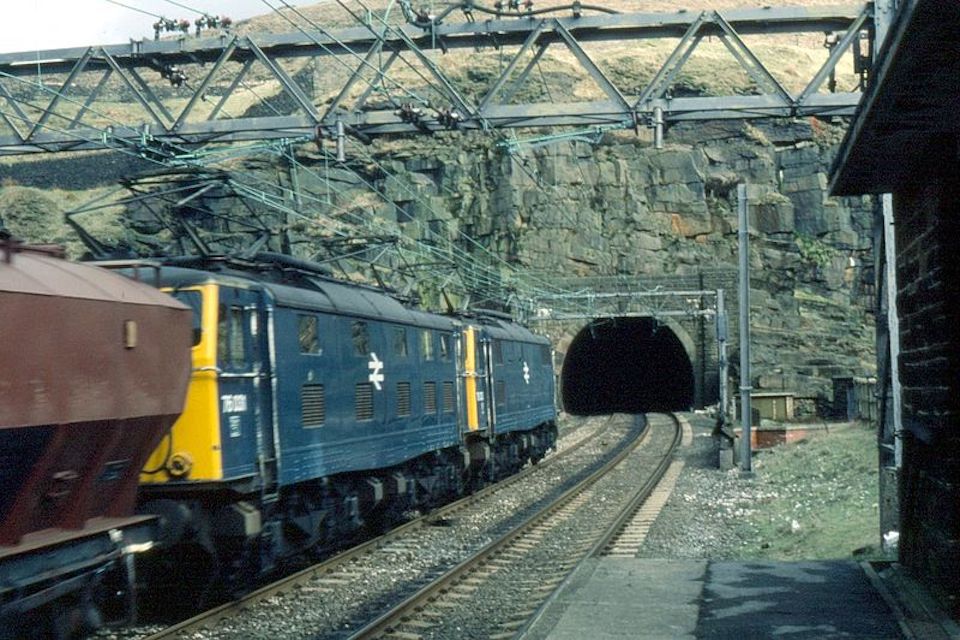Rail freight resurgence in Sheffield

Sheffield is at the heart of England’s fourth most populous area and was also at the heart of the Industrial Revolution. Today, the city region is far from finished with its manufacturing past, and the community is adapting to the new industrial portfolio of the ‘Steel City’. The railway legacy of Sheffield’s smoke-stack industrial past provides the basis for a growing rail freight sector.
An informal survey of rail freight operations in and around Sheffield has revealed extensive repurposing of legacy rail freight infrastructure. The unofficial poll has been carried out by senior executives in the industry and at the local authorities that support the South Yorkshire region. Primarily, the former marshalling yard at Tinsley, on the eastern boundary of Sheffield and neighbouring Rotherham, has become a crucial hub for transporting containerised goods and bulk loads.
Rail freight still underwriting Sheffield economy
Sheffield is a busy area for rail freight operations, with multiple terminals and daily trains serving various industries. Aside from originating and terminating services, the city is a thorough route for many other goods trains. Notably, there is significant aggregates traffic from nearby quarries; and cement traffic, much of which passes through the city’s Midland passenger station. One such train derailed within the station in July 2021, causing significant disruption.

Overall, the history of rail freight operations in Sheffield has been closely linked to the city’s industrial development. The transport of goods by rail played a crucial role in the growth of the local and national economy. Today, rail freight operations continue to be an essential part of the city’s transport infrastructure, supporting local industries and helping to reduce road congestion. However, almost all of the city’s intricate legacy of short goods lines and sidings has been swept away in the past fifty years, along with the works they served. That hasn’t stopped many clever and enterprising industries from taking advantage of remaining niches and significant opportunities.
Tinsley remains a growing freight hub
Among the entrepreneurial newcomers, Newell and Wright operate an intermodal container terminal, which opened in 2021 on part of the former marshalling yard at Tinsley. Currently, the company runs three daily trains to the port of Felixstowe, removing around 200 truck journeys from the adjacent motorway. Also at Tinsley, Aggregate Industries has a daily train from Bardon Hill in Leicestershire to their concrete plant in Tinsley. Building supplies specialist Cemex also has a daily train from Tunstead in the Peak District to their concrete plant in Attercliffe in Sheffield.
Tinsley may no longer handle the vast quantities of coal and wagon load traffic for which it was built in the early 1960s, but talk of the yard’s demise is overstated. For example, several train loads of scrap metal are dispatched by European Metal Recycling, generally to Liverpool Docks; and multinational manufacturer Outokumpu exports stainless steel from their nearby plant. Additionally, construction spoil from London’s building boom arrives three times per week at Tinsley for road transfer to former deep mining collieries for backfilling. FCC Environment handles top soils from their rail facility. There is also a nearby freight terminal at Meadowhall, which handles scrap, slag, and finished steel – and happens to be handy for the shops at the massive mall next door.
Sparks of ambition for electrification
One line still in use for its intended purpose serves the Liberty Steels Stocksbridge plant in the northwest of the city – although the line is a shadow of its former self. Dormant at present, the line generally has a daily train of steel from another Liberty Steel plant in nearby Rotherham. Stocksbridge is on the former passenger mainline, once served by the now-demolished Sheffield Victoria station. The mixed traffic route was locally known as the Woodhead Line to Manchester and was electrified to a unique 1500v DC system. The through route closed beyond Stocksbridge in 1981, but campaigners hope to see the Sheffield end reopened for local services.

The prospects for rail freight development in Sheffield are promising. There is a focus on intermodal development, of which the nearby iPortRail terminal at Doncaster, which opened in 2018, is notable. The electrification of the Midland Main Line, the major rail line that runs through Sheffield, is currently the subject of an extensive electrification project – albeit a project under some threat, given the state of the national finances. However, if completed, the electrification scheme, at a more conventional 25kV AC, is expected to improve rail services’ speed and reliability and pave the way for the use of electric locomotives for freight transport in the future. The entrepreneurial spark behind Sheffield’s rail freight may well see an electrifying spark of life in the not-too-distant future.




